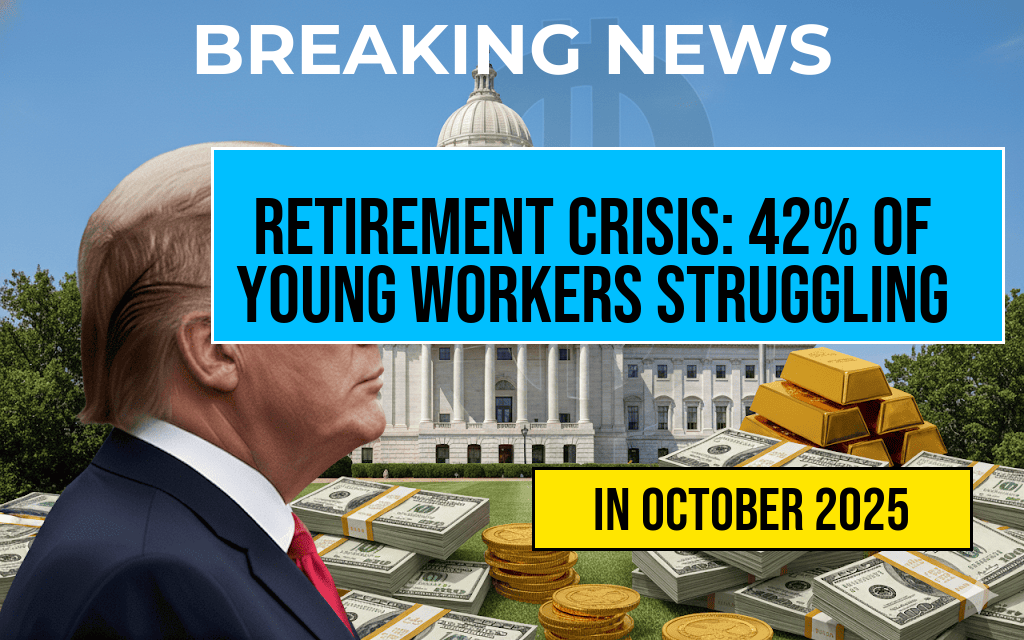As retirement savings continue to lag behind, a concerning trend emerges among younger workers, with recent surveys revealing that 42% of individuals aged 25 to 40 lack any additional cash reserves beyond their regular income. This financial vulnerability leaves a significant portion of the workforce ill-prepared for unforeseen expenses and diminishes their prospects for a secure retirement. The widening gap between the need for adequate savings and the actual financial capacity of younger Americans underscores systemic challenges, including stagnant wages, escalating living costs, and limited access to employer-sponsored plans. Experts warn that without immediate intervention, a growing demographic may face persistent financial insecurity well into their retirement years, intensifying the national retirement crisis.
Understanding the Scope of the Retirement Savings Shortfall
Recent data from the Federal Reserve and financial research organizations paint a sobering picture of the state of retirement preparedness among young Americans. According to a report by the Federal Reserve’s 2022 Economic Well-Being of U.S. Households, nearly half of all adults under age 45 have less than $1,000 saved for retirement. This indicates a significant acceleration in the savings deficit, with many unable to set aside even modest amounts.
Particularly alarming is the fact that 42% of younger workers report having no emergency fund or savings buffer beyond their current income. This leaves them vulnerable to sudden financial shocks such as medical emergencies, job loss, or economic downturns, which could further jeopardize their ability to contribute toward retirement goals in the future.
Contributing Factors Behind the Crisis
- Stagnant wages and rising living costs: Despite a tightening labor market, real wages for many young workers have remained stagnant or declined when adjusted for inflation. Meanwhile, housing, healthcare, and education expenses have surged, leaving less disposable income for savings.
- Limited access to employer-sponsored retirement plans: Many younger employees work in gig economy roles or part-time positions that do not offer retirement benefits, forcing reliance on individual savings accounts, which are often underfunded.
- Debt burdens: Student loans, credit card debts, and other financial obligations consume a substantial portion of income, reducing capacity to save for the future.
- Lack of financial literacy: A significant number of young workers lack the necessary knowledge to effectively plan and prioritize retirement savings amidst competing financial needs.
The Impact of Insufficient Savings on Future Retirement Security
The consequences of inadequate savings are profound, extending beyond individual hardship to broader economic implications. Without sufficient funds, many young workers may be forced to delay retirement, work longer than planned, or accept lower-quality healthcare and living standards during their retirement years. Furthermore, the reliance on Social Security as a primary income source raises concerns, especially given the ongoing debates over its long-term solvency.
According to a recent study by Forbes, millennials are projected to have an average retirement savings balance of less than $50,000 by age 65 if current trends persist. This sum falls far below the recommended amount needed to sustain a comfortable retirement, which financial planners estimate to be at least $1 million for most Americans.
Potential Solutions and Policy Responses
Enhancing Access and Incentives
Addressing the retirement savings crisis requires multifaceted strategies. Expanding access to retirement plans for gig workers and part-time employees remains a priority. Several states have enacted legislation to establish state-sponsored retirement savings programs, such as California’s CalSavers, which allows workers without employer-sponsored plans to contribute to individual accounts automatically.
Improving Financial Literacy and Planning
Educational initiatives aimed at increasing financial literacy can empower young workers to make informed decisions. Resources that explain the importance of early savings, compound interest, and diversified investments can foster healthier financial habits over time.
Policy Reforms and Incentives
| Policy Measure | Details | Potential Impact |
|---|---|---|
| Automatic Enrollment | Mandating that employers enroll employees into retirement plans by default | Increases participation rates and savings levels |
| Tax Incentives | Enhanced tax credits for low- to middle-income savers | Reduces barriers to saving and encourages contributions |
| Financial Education Programs | Mandatory workplace financial literacy training | Improves financial decision-making skills among young workers |
Looking Ahead: The Long-Term Outlook
The persistent gaps in retirement savings among younger Americans threaten to perpetuate economic insecurity for generations. While individual efforts are crucial, systemic reforms and targeted policy measures are essential to reverse the trend. As the U.S. population ages, policymakers, employers, and financial institutions must collaborate to create a more inclusive and sustainable retirement savings landscape.
For further insights on retirement planning and financial security, resources such as Wikipedia’s Retirement Savings page and industry analyses from Forbes provide valuable context and guidance.
Frequently Asked Questions
What is the main issue highlighted in the article regarding retirement savings?
The article emphasizes a retirement savings crisis where a significant portion of younger workers, specifically 42%, have no extra cash to contribute towards their retirement, putting their future financial security at risk.
Why are younger workers struggling to save for retirement?
Many younger workers face challenges such as low wages, high living costs, and insufficient financial literacy, which hinder their ability to allocate funds for retirement savings.
What are the potential consequences of not saving enough for retirement?
Insufficient retirement savings can lead to financial instability in later years, increased dependence on government assistance, and the need to work longer than planned.
What steps can younger workers take to improve their retirement savings situation?
They can start by setting aside small amounts regularly, increasing contributions as their income grows, and seeking financial advice to develop effective savings strategies.
How can policymakers address the retirement savings crisis among younger workers?
Policymakers can implement better retirement plan access, promote financial literacy programs, and consider incentives to encourage early and consistent savings among young adults.










